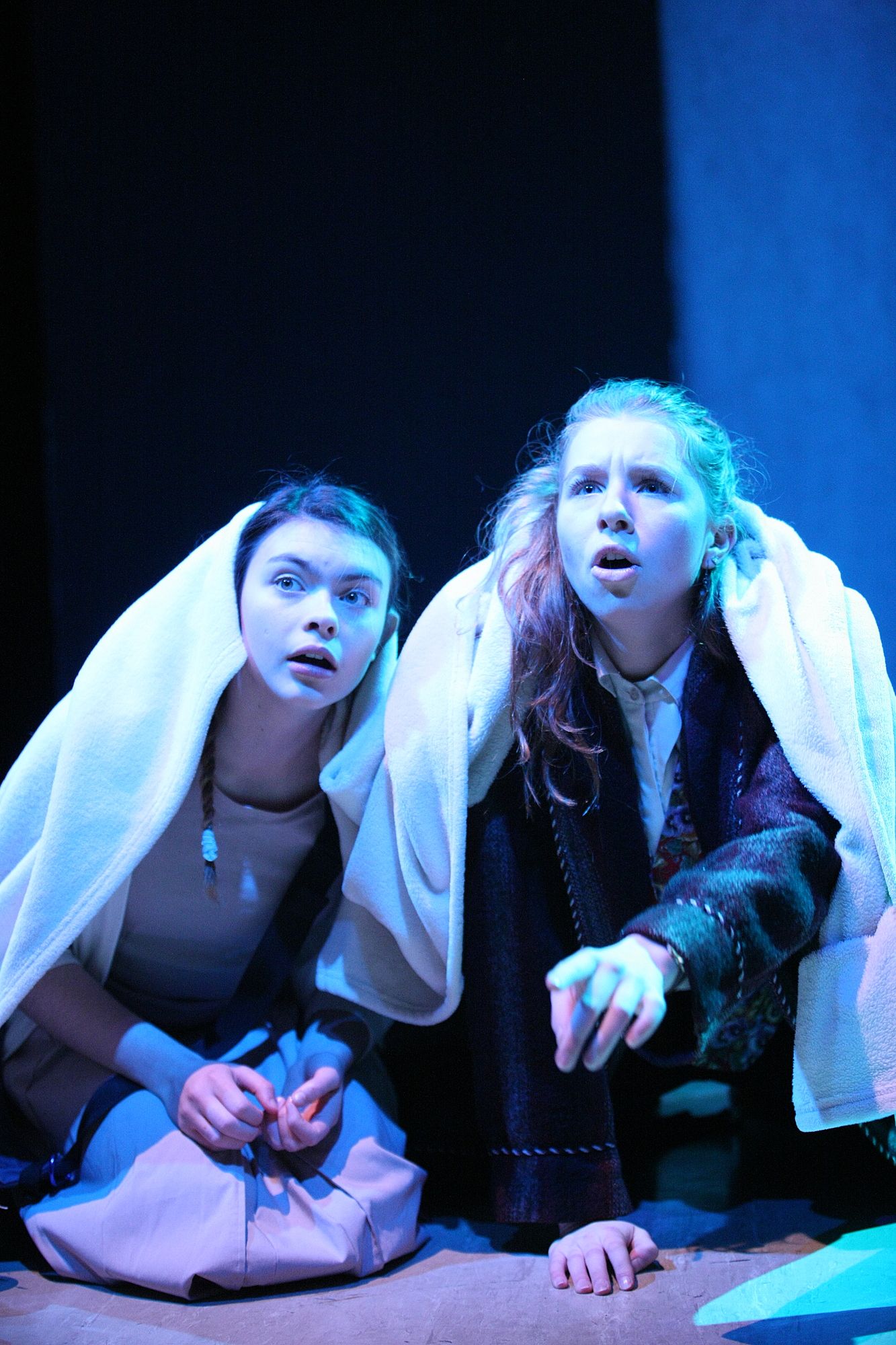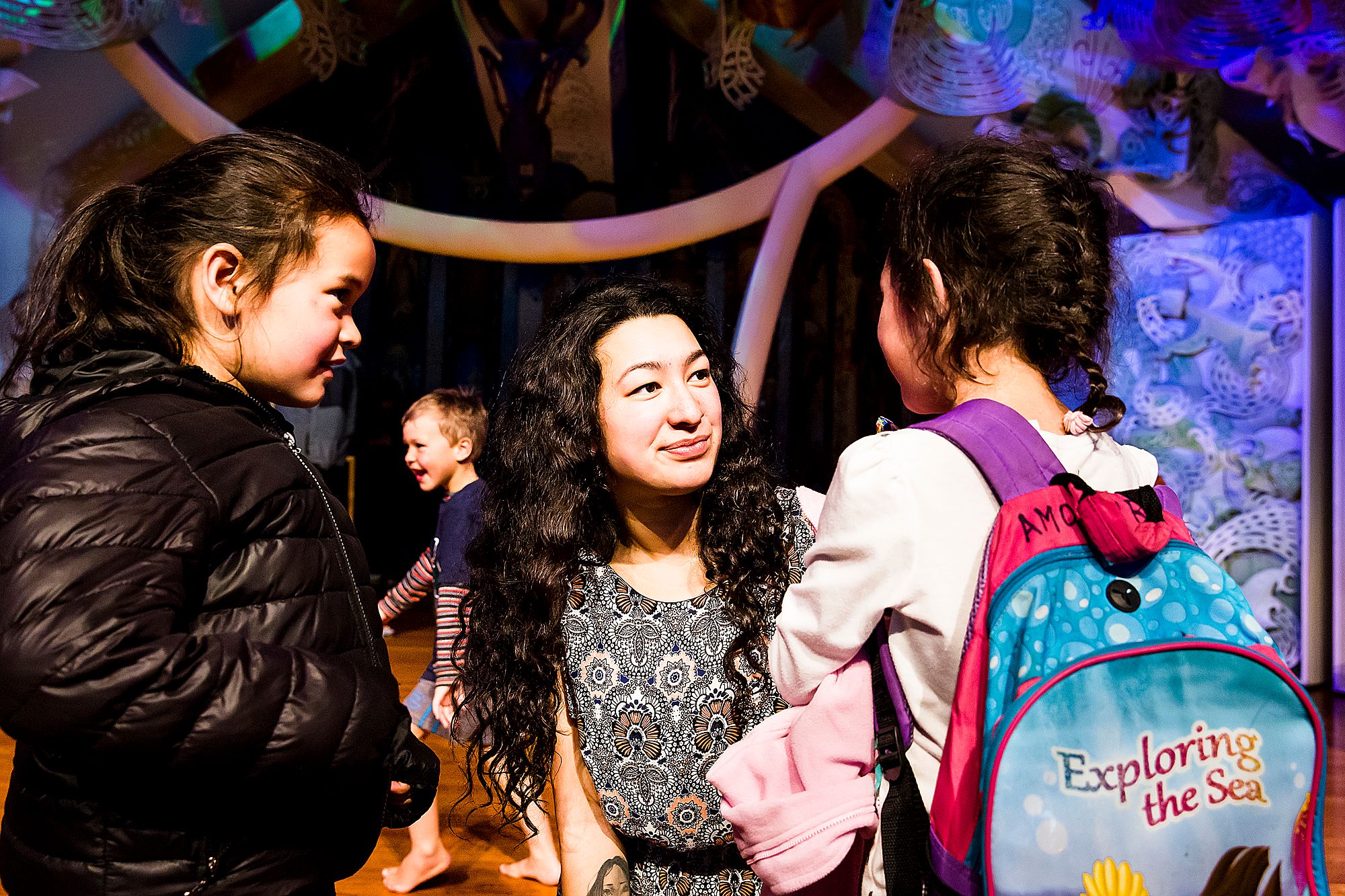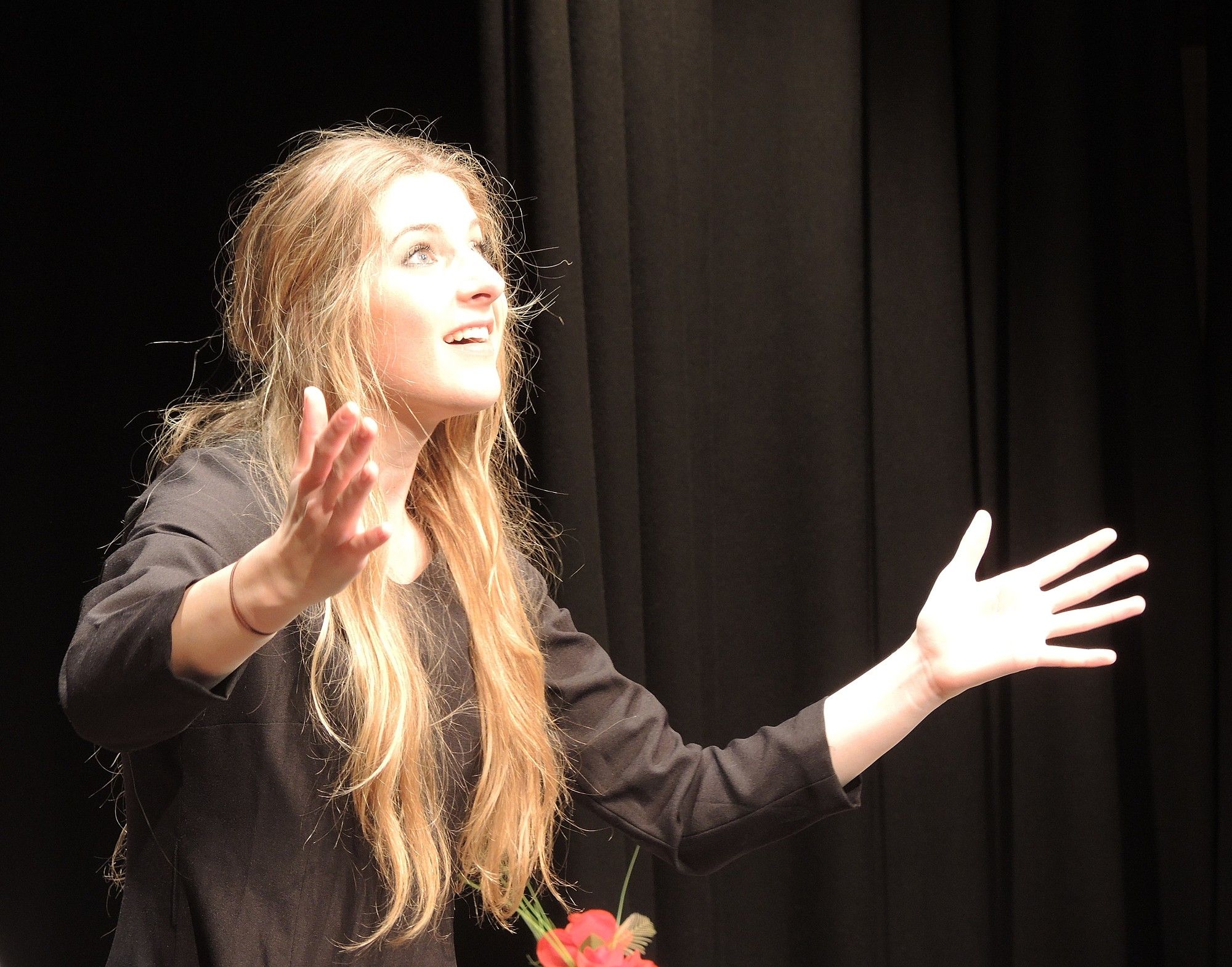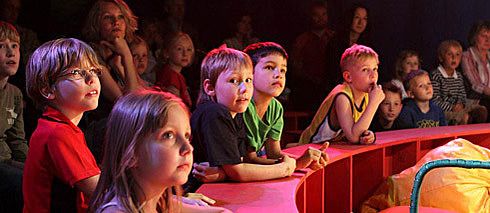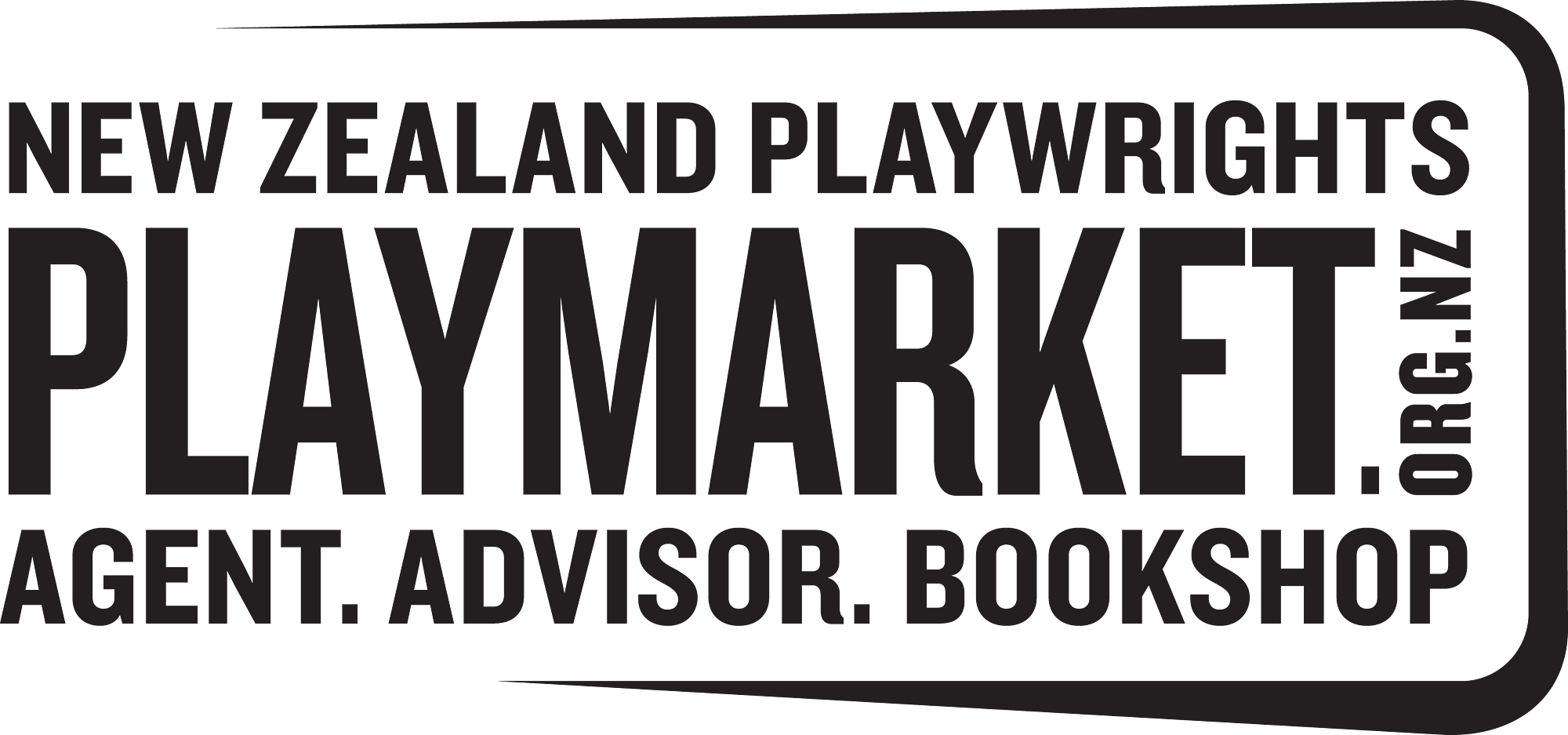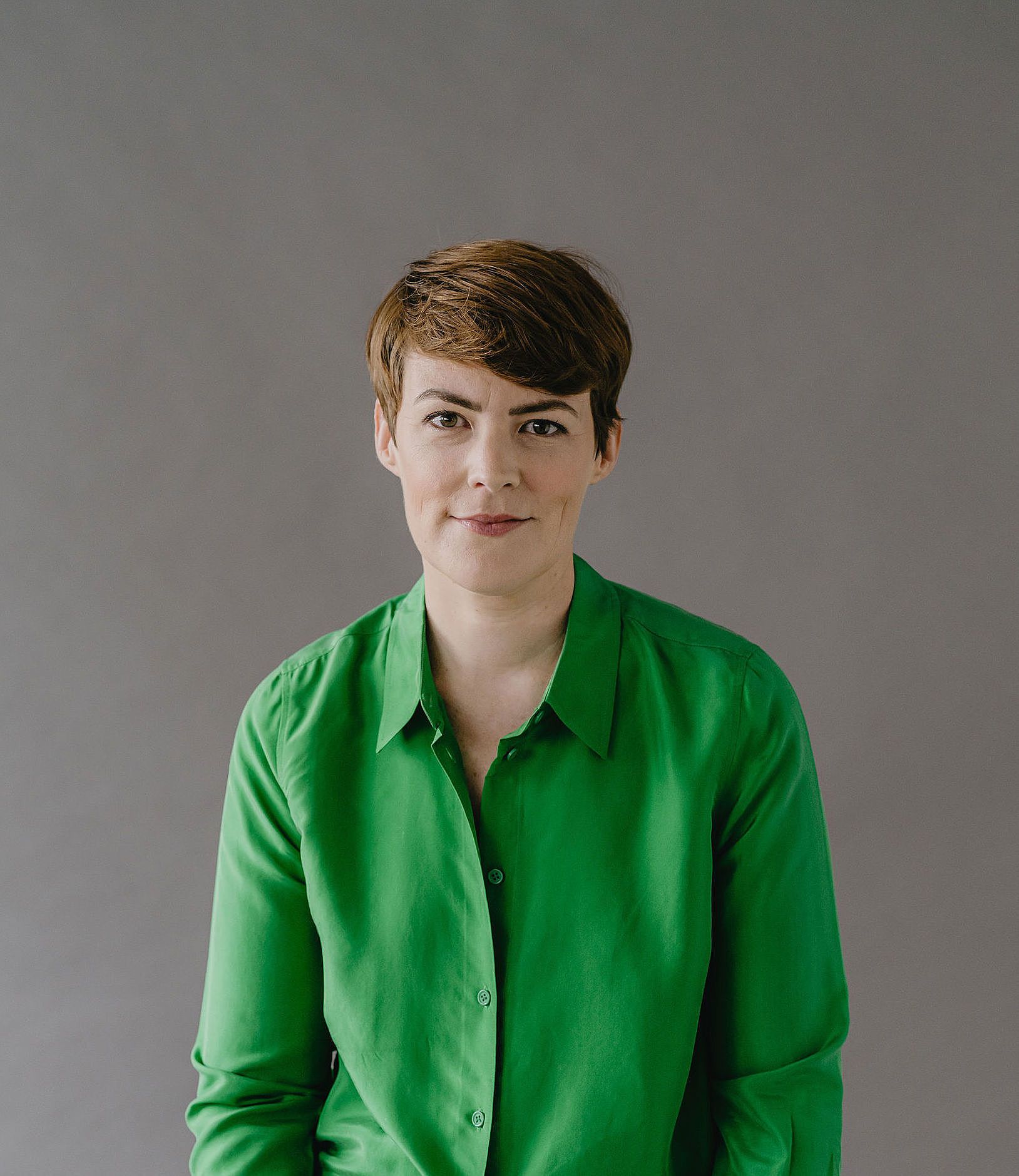The Play in the Playground: The New Zealand Play and Playwriting in Schools
We're excited to be partnering with Playmarket this year to unearth great writing and other gems from their archives.
With Auckland Theatre Company's Here and Now Festival opening this weekend featuring new work created with and for young people, it seems a fitting moment to republish this article which first appeared in the Playmarket Annual last year.
Kate Prior chats to New Zealand primary and secondary school teachers to find out just how much exposure New Zealand students get to our own New Zealand plays, and how students explore playwriting themselves.
“At 16, to be handed a play that says ‘Hamlet was insufferable, Horatio boring, history incomplete or just plain invented, and all these things you might be starting to suspect are just a little bit unfair are 100% definitely, unequivocally real’ is such a validating, valuable, victorious thing”. Wellington comedian Saran Goldie-Anderson wrote this note in a review for a recent production of Ophelia Thinks Harder, Jean Betts’ touchstone play which Saran discovered at secondary school in 2005.
Nine years earlier, age 14, I first discovered the play. I think it was maybe the first New Zealand play I’d ever read – the first I really got my head into and wrangled with the ideas and language. Reading that play not only unearthed questions that were beginning to trickle in about social structures, but questions about art – what, as a theatre maker, you’re able to do with text, and hell, the fact you’re allowed to set a bomb under the classics.
1996, 2005 and now 2016: Ophelia Thinks Harder has endured. The rate of its performance in schools shows no sign of letting up. In the last two years alone it has been performed at over 10 secondary schools, and is now one in a pantheon of NZ plays that are studied and performed as part of the New Zealand drama curriculum. So if Saran and I were taking drama at school in 2016, how different would the landscape be? What exposure do students of all ages get to the New Zealand play, and as creators what tools are they offered in playwriting and devising themselves?
The New Zealand play in the secondary school drama curriculum has recently gained increased visibility. In the last several years, following a push from teachers, the amount of playwrights and plays on the prescribed list for NCEA assessment has increased, which means that now 50% of that list of 35 playwrights (from Euripides to Renée) are from New Zealand. Feilding High School drama teacher Karla Haronga, who started at her school in 1999 remembers, “once we got into the 2000s, New Zealand plays really came into their own”.
Of course, there was a time when this prescribed list of plays didn’t even exist. It emerged in the 1980s and even then the list was heavily Eurocentric. In 1976, teacher and playwright Susan Battye, then based in the West Coast, recognised that there was nothing in the curriculum in general, let alone the drama curriculum, that reflected local histories. So she created a play about the Brunner Mine disaster, New Zealand’s worst, which caused the death of 65 miners. Since then, in various teaching posts, Susan has created over 20 plays which reflect New Zealand stories.
Teachers writing plays for their students is still often a solution for many who want to speak locally to their immediate community and need to fulfill that all-important criterion of productions in schools: a large cast with reasonably substantial roles for each student.
The positioning of the New Zealand play within the curriculum is hugely valuable as a cultural, social and historical teaching tool.
But in terms of extant New Zealand playscripts, what are the solid gold secondary school hits? It’s not in fact Betts’ Ophelia Thinks Harder but her anarchic feminist fantasia Revenge of the Amazons that Playmarket licensed the most in the last year, followed hot on its heels by Nigel Collins, Toby Leach and Damon Andrew’s underdog farce Wheelers Luck, Fiona Farrell’s Chook Chook and Oscar Kightley and Dave Armstrong’s Niu Sila.
Beyond production practicalities, the positioning of the New Zealand play within the curriculum is hugely valuable as a cultural, social and historical teaching tool. Betts’ work offers opportunity for exploration into feminist perspectives. Plays such as Niu Sila cover territories of New Zealand history (such as the 1970s dawn raids) which aren’t necessarily covered in the History curriculum. Haronga believes New Zealand plays are some of the best records of our history and has used Mervyn Thompson’s Children of the Poor as a tool to discuss contemporary approaches to immigration and concepts of nationalism. "My students are really interested in New Zealand plays" she says, "I sell them massively".
In their book Drama at the Heart of Secondary School John Rainer and Martin Lewis call the subject of drama in schools "the crucible within which human actions and the consequences of those actions can be examined". The form of the playscript inherently makes history accessible; a student potentially gains not only conceptual but embodied understanding of a subject. Drama teachers commonly speak about complex discussions occurring in their classes. The kind of discussions which can only arise from learning that's connected to the social sphere.
The New Zealand play provides not only a bridge extending into the past but insight into other cultures. Plays such as Briar Grace-Smith’s When Sun and Moon Collide and Hone Kouka’s Waiora or Mauri Tu – both containing worlds in which Pākehā and tangata whenua connect – offer invaluable opportunity for embedded bicultural practice. Iana Grace, a performer in Auckland Theatre Company’s 2016 Next Big Thing season remembers the first New Zealand play she read - Hone Kouka’s The Prophet. “I always thought it was an interesting choice for our painfully white North Shore high school considering its heavy Māori themes, with me being the 'most brown' in the class but the whitest half-Samoan you’ll ever meet. The play had a strong theme of displacement and the effect of urbanisation on young Māori people. It was a very different story for our class – not the usual culture we hear about in history”.
A historical or cultural vantage point but also a direct community link, the New Zealand play is utilised to explore very local community issues too. Haronga was about to mount Miranda Harcourt and William Brandt’s Verbatim (which draws on the voices of prison inmates) with her Year 12 class when the devastating Scott Guy murder hit the Fielding community. “I asked the kids if they still wanted to do it” Haronga remembers, “they said yes, let’s do it because it’s a conversation with the community. They thought it was good to have that discussion. There was a lot of respect for that play because it’s real people”.
When I performed today I was trying to give all my best, because he deserves it. It’s kinda like paying tribute to him.
In the same vein, last year Kerry Lynch, a drama teacher at Otahuhu College, and his class mounted a production of Aroha Awarau’s Officer 27, which focuses on the police shooting of Halatau Naitoko in 2009. Halatau’s younger brother William performed in the play - a project deeply connected to the school community. Pierre Allan, William’s class member interviewed for Māori TV’s Native Affairs said, “When I performed today I was trying to give all my best, because he deserves it. It’s kinda like paying tribute to him”.
When it comes to students creating their own work, both devising processes and single-authored script writing is covered in Year 11-13. However drama teachers will often utilise the tools of collaborative devising (creating work without a extant script) as an access point to script writing. Many teachers lean towards devising for several reasons. Often it’s where the teacher will feel strongest in their own knowledge, but it’s also due to the immediate necessity of getting students up on their feet and working with physicality and space, before getting bogged down in paralysing notions of ‘what I want to say’ or a predilection for excessive dialogue. By Year 13, the option of working with a collective or singular voice will often be chosen by the student themselves, and teachers acknowledge that students learn pretty early on where they thrive.
The first steps towards theatre making will often be explored as early as primary school. Charles Bisley, a primary teacher at Kelburn Normal School notes that as developmentally appropriate, he will work with children on creating their own work, which offers skills in the aesthetic and social dimensions of learning, as well as developing the lifelong learner. Jennifer Kim, a primary teacher at Hataitai School, integrates drama learning into literacy and recognises drama as an avenue in which primary students are able to express their own feelings, wants and needs.
As a formally assessed subject, devising in the dedicated drama classroom begins in Year 9 and 10. A drama teacher to this age group at Logan Park High School, Christine Colbert and her colleagues were keen to shake up the prevalence of Shakespeare and include more devising around New Zealand stories in their programmes, so initiated a unit in which students created devised work inspired by the stories and the space within exhibitions in the Toitū Otago Settlers Museum in Dunedin. The very act of finding their own voice regarding New Zealand stories gave the students energy for the work, plus “this age group are boisterous”, Christine notes, “they’ll give anything a go”.
Tama Smith, drama teacher at Hutt Valley High School, has developed a solid devising programme over 10 years of NCEA experience, but still acknowledges that devising is one of the hardest units to ‘teach’ – understandable when so much of this work is less about hard-and-fast rules and more about refining instincts. That said, in a world in which ‘creativity’ has become an aspirational norm in the workplace, devising offers the kind of life skills that ostensibly should be the most valued in an educational context. Humility, empathy, and the ability to accept difference are just some of the benefits for students learning to work in creative collaborations. So too are listening and negotiating in a group and recognising each other’s strengths. In one of Karla Haronga’s classes the question arose, "why is it important to get to know people?" A student answered, "because you get to know what they’re good at".
In a world in which ‘creativity’ has become an aspirational norm in the workplace, devising theatre offers the kind of life skills that ostensibly should be the most valued in an educational context.
Despite single-author playwriting commonly being less of a teaching focus, there are still students who lean towards it, and in this case, it's common for the New Zealand play the students may already be studying to be referred to as an exemplar. The impact of media studies and our increasingly media-saturated world on the drama classroom is perhaps more prevalent in 2016 than it would have been in 1996. Drama students who take media subjects already come with knowledge of scriptwriting structuring formulae and online writing software such as Celtx. Often these will be the drama students more interested in writing their own scripts. They especially appreciate the freedom - outside screen conventions - which thinking theatrically offers.
In her 22 years at Epsom Girls Grammar, Susan Battye was interested in exactly this - encouraging the individual playwright to untie their thinking from a television drama sticking place and take into account the theatre space. Always leaning towards playwriting over devising, she was aware that it was the less popular taught unit at the time, however Battye was more interested in “giving the individual the opportunity to express themselves unfettered, but with guidance”.
Common to both devising and playwriting processes in the drama classroom is a constant cycle of feedback and refining. Peer feedback in this context is valued just as much as teacher and self-assessment. Even if her Year 13 students are working on scripts of their own, St Kentigern College drama teacher Emma Bishop builds in a weekly check-in and script reads with fellow drama class members.
For the first time this year, Peter Rutherford will be teaching a playwriting unit with his students at Rangi Ruru Girls’ School and is interested to find how this develops. Peter is keen to bring playwrights into the room such as Philip Braithwaite, and fingers crossed, Fiona Farrell, acknowledging that talking with real flesh-and-blood playwrights is a rich opportunity for students. And for teachers too - several teachers noted that connecting with playwrights offers great professional development opportunities and they’d be really interested to see this as a potential growth area. “In the last five years I’ve seen more connection between teachers and playwrights”, Emma Bishop states. “Playwrights are interested in what teachers are teaching”.
In an institutional educational environment that categorises learning, the drama classroom has the potential to draw together disparate threads and subvert traditional hierarchical structures. The New Zealand play is experiencing unprecedented health in secondary schools. Its study and performance provide opportunity – alongside playwriting and devising – for students to gain trust and confidence in their own ideas and explore a range of concepts covered throughout the curriculum. They do so in an environment in which human action and its consequence are the vital areas of enquiry.
Quick insights:
The Curriculum and NCEA
Kim Bonnington, Secondary Curriculum Learning Facilitator at University of Otago College of Education believes the New Zealand arts curriculum is world-class.
As she explains, the arts curriculum is not prescriptive but in fact extremely open; a teacher has the freedom to build the curriculum around the interests of students and needs of the community - drawing on as much local content as they would like. The aspirational statement in the curriculum notes: “by means of the drama that they create and perform, students reflect and enrich the cultural life of their schools, whanau and communities”.
To aid teachers, NZQA publishes online a comprehensive resource of NCEA assessment tools which contain more detailed information regarding assessment. This is where you can find the list of prescribed plays.
The assessment tools can be a double-edged sword. While hugely valuable they also present a slight risk; for an extremely busy or newly-trained teacher tasked with creating programmes for a variety of age groups in addition to covering off requisite NCEA credits, the tools often become a ‘default curriculum’.
Instead of focusing on assessments then considering what they will teach, Bonnington encourages drama teachers to explore what they’d like to teach first, then structure assessments around this. As John Rainer and Martin Lewis note, "we should be assessing what is of value rather than valuing what is assessed". It’s an approach Feilding High School drama teacher Karla Haronga acknowledges is definitely trickier but more rewarding in the long-term. “It’s not about the curriculum” she says, “it’s what the teacher makes of it”.
More Great Plays For The Young
After speaking with a range of drama teachers I’m convinced their knowledge of the New Zealand canon rivals our top critics. So, aside from those tried and true popular schools plays, what are some other rich plays for education?
Hutt Valley High School teacher Tama Smith rattles off an array of favourites he has worked on with students: Simon O’Connor’s An Illustrated Death of Eddie Fivetrees, Maurice Shadbolt’s Once on Chunuk Bair, Michelanne Forster’s Daughters of Heaven, and Duncan Sarkies’ Bystander and Lovepuke.
Karla Haronga at Fielding High School would love Jamie McCaskill’s Manawa to be studied more widely. Kim Bonnington loves the physicality that Pip Hall’s Shudder inspires in students. Toa Fraser’s Bare is one of the most popular plays in schools. Emma Bishop at St Kentigern College enjoys it as a real snapshot of New Zealand.
Playmarket consistently utilise their Plays for the Young competition as a way to access and promote new plays. Jean Betts instigated the competition while a Script Advisor at Playmarket in 2009.
Both Claire Ahuriri’s Spilt Milk and Steph Matuku's A Story of Rona came through the competition, and both are published in Playmarket’s anthology Stage Adventures: Eight Classroom Plays - a great resource for plays for the primary school classroom. A Story of Rona is one of primary teacher Charles Bisley’s favourites, as well as Sapai and the Yam Snatchers (Michelanne Forster and Leilani Unasa) and Dave Armstrong and Gareth Farr’s Kia Ora Khalid. Other Playmarket favourites for performance in schools include Kevin Keys’ Desperate Antics, Jo Randerson’s Fold, Kerry Lynch’s Dream Seer, Carl Nixon’s adaptation of Lloyd Jones’ Book of Fame and Lauren Jackson’s Polly Hood in Mumuland. A key playwright for the young is Sarah Delahunty with a great favourite 2B or nt 2B (published by Playmarket).
And just because plays are popular doesn’t mean they can’t be given fresh and surprising new interpretations. When Whangarei Boys’ High drama teacher Fiona Churcher offered several production options to her students, they collectively chose to mount an all-male version of Revenge of the Amazons. She worked with the cast to really explore the feminist issues within and found a real interest in students to engage in ideas not previously considered. Here’s to the Whangarei feminists of the future!
An International Perspective
In 2014 I attended Berlinale Generation with a short film I'd made. This section of the Berlin International Film Festival is curated by Kiwi Berliner Maryanne Redpath with young audiences at its centre. Every screening is packed to the gunnels with school-age kids, all there to watch short films from Auckland to Istanbul. It doesn't feel like an adjunct to the 'main' festival, but an essential part of the Berlinale.
It made clear for me the position of children and young people in the arts in Germany. What is true for film is perhaps even more so for theatre. There, theatre is not luxury but lifeblood. In Frankfurt in 1989, Kinder und Jugendtheaterzentrum (the Children and Young People’s Theatre Centre) was established. This is an organisation dedicated to the development of theatre for children and young people as art (yup, not as provision, but as art) and it's geared towards the participation of all young people in the performing arts.
Deputy director at KJTZ, Henning Fangauf, was part of establishing a program which connects performing arts and educational processes. The programme is two-pronged: one section brings playwrights into theatres to create work for young people, the second, entitled TAtSch (Theatre Authors take to Schools) brings playwrights into schools. Fangauf explains that this involves playwrights and schools agreeing on a one-year sponsorship. “The authors come into the schools, work with students in writing workshops, do play readings and jointly create a play” he notes.
This programme is not only for students taking drama as a subject, it's for all students. A playwright will be assigned to a classroom with the primary aim of creating a piece of theatre with students. It’s a programme consistent with a festival like Berlinale Generation – treating the arts not as domain of the elite few but established early in life as democratic necessity for all.
This article is published as part of our partnership with Playmarket.

